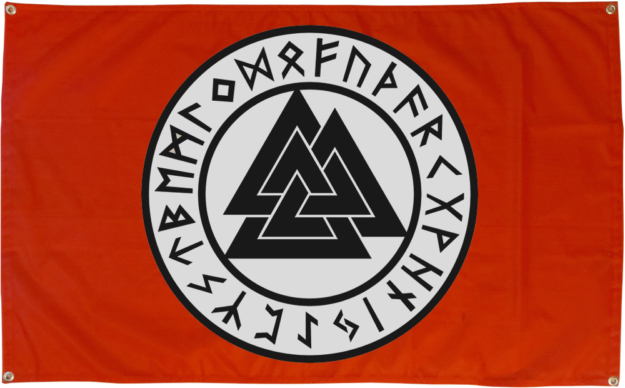Description
The Helm of Awe, also known as Ægishjálmr in Old Norse, is a powerful symbol with ancient origins that has captivated people for centuries. This enigmatic symbol has been revered for its protective and mystical properties, and it continues to hold great significance in Norse cultures and belief systems.
The Origins of the Helm of Awe
The Helm of Awe is deeply rooted in Norse mythology, where it is associated with the god Odin, who was the ruler of Asgard and the supreme deity in the Norse pantheon. According to legend, Odin was known for his wisdom, knowledge, and magical abilities, and he was often depicted as a powerful and enigmatic figure.
It is believed that the Helm of Awe was a symbol of protection and might, and warriors would often inscribe it on their foreheads before heading into battle, as it was thought to instill fear in their enemies and grant them protection from harm.
Furthermore, the Helm of Awe was also associated with the legendary dragon Fafnir, who was slain by the hero Sigurd in Norse mythology. It is said that Sigurd used the symbol to instill fear in the dragon and gain the upper hand in their epic battle.
The Symbolism of the Helm of Awe
The Helm of Awe is comprised of a series of interlocking arms that radiate out from a central point, creating a mesmerizing and intricate pattern. This symbol is often interpreted as a representation of strength, protection, and the ability to strike fear into the hearts of one’s adversaries.
Additionally, the Helm of Awe is thought to possess magical properties, and it is said to have the ability to safeguard its wearer from harm and misfortune. In Norse mythology, the symbol was believed to have the power to protect the soul from the perils of the spirit world and to ward off malevolent forces.
Furthermore, the Helm of Awe is often associated with the concept of inner strength and resilience, as it is believed to empower individuals to overcome challenges and obstacles with courage and determination.
The Helm of Awe in Modern Culture
Despite its ancient origins, the Helm of Awe continues to resonate with people in the modern era, and it has been embraced by various individuals and communities who are drawn to its potent symbolism and rich history.
Today, the Helm of Awe is often worn as a piece of jewelry, such as pendants or rings, and it is cherished for its aesthetic appeal as well as its perceived protective qualities. Many people view the symbol as a talisman of strength and resilience, and they wear it as a reminder of their inner fortitude and ability to overcome adversity.
Furthermore, the Helm of Awe has also found its way into popular culture, where it is featured in literature, art, and media, serving as a potent emblem of power and protection. Its striking appearance and deep-rooted symbolism continue to captivate the imagination of people around the world.
In conclusion, the Helm of Awe stands as a timeless symbol of strength, protection, and resilience, carrying with it a rich tapestry of mythology and meaning that has transcended time and continues to inspire and intrigue people to this day.






